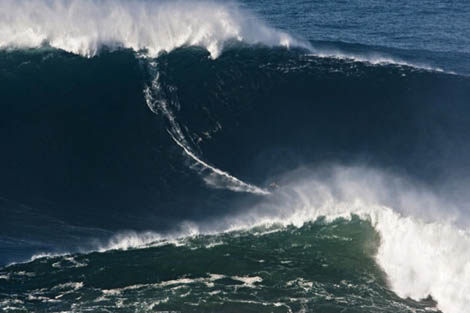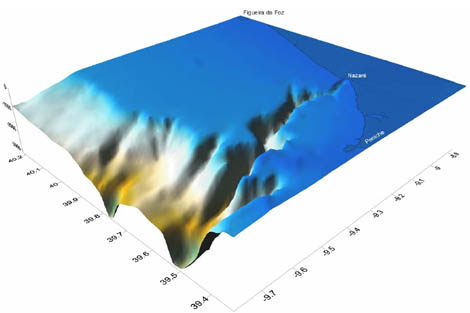 Have you ever imagined surfing a wave with 30 meters on the Portuguese coast?
Have you ever imagined surfing a wave with 30 meters on the Portuguese coast?
The highest ocean waves, in height, along the entire Portuguese coast are more majestic and frequently found in the region defined by Praia do Norte, in the village of Nazaré.
It is important to say that wave physics is a complex matter, due to the influence of numerous factors such as, among others, the temperature and salinity of surface and seabed waters, tidal ranges, ocean currents, biomass richness and diversity (algae, plankton, etc.) which reduces the surface tension of water, the geological and oceanographic context.
In the latter case, the imposing Nazaré Submarine Canyon, one of the largest in the world, plays a decisive role in the regional circulation of water and sediment masses and, therefore, influences the formation of waves.
The researcher Luís Quaresma dos Santos, author of the thesis “Observation of Non-Linear Internal Waves Generated over the Nazaré Submarine Cannon” (2006, Department of Physics of the Faculty of Sciences of the University of Lisbon) characterizes the gigantic underwater geographic accident as follows: “ Among a dozen cannons on the Portuguese mainland, the one at Nazaré is undoubtedly the most imposing. In addition to being one of the largest in the world, it completely cuts across the continental shelf, perpendicular to the coast, and extends for more than 220 km. North of the cannon the platform is narrow (40-50 km) and flat, with an average slope of the order of 0.3%. South of the canyon, the platform becomes even narrower and less deep, being confined by Cabo Carvoeiro (Peniche) and the Berlengas Islands”.
Due to the configuration of the Canyon, “it is observed the propagation of an internal tide of great amplitude along its internal domain, as well as a reduction in the tidal amplitude along the coast of Nazaré”, describes that researcher.

This pioneering work on the cannon characterized for the first time the propagation of non-linear internal solitary waves (C-NIWs) over the middle continental shelf, north of the Nazaré submarine cannon.
The cannon itself seems to play a leading role in these waves, which “are distinguished from the others by a greater amplitude (reaching 30 m) and by the induction of current pulses with greater intensity near the bottom (0,1-0,2 m/ s)".
Waves, called solitaries, “are observed in groups or wave trains. In Canhão da Nazaré, the C-NIWs trains consist of two to three waves, with periods of 5 to 10 minutes and amplitudes from 10 to 30 m. They occur predominantly "between the end of spring and the beginning of autumn, accompanying the appearance of a seasonal thermocline", so this time is favorable for the formation of waves of great amplitude and period, a great potential for this coastal area for the practice of tow-in surfing in giant waves.
And it was in this undulating context that the Hawaiian surfer Garret McNamara managed to enter the Guinness Book of Records, when surfing a wave with about 30 meters high in the coastal area known as Norte do Canhão, on November 1, 2011.
Since then, the giant waves that form in the Nazaré Canyon have become the target of worldwide attraction and the dream of many surfers.
Author Antonio Piedade
Science in the Regional Press – Ciência Viva


















Comments